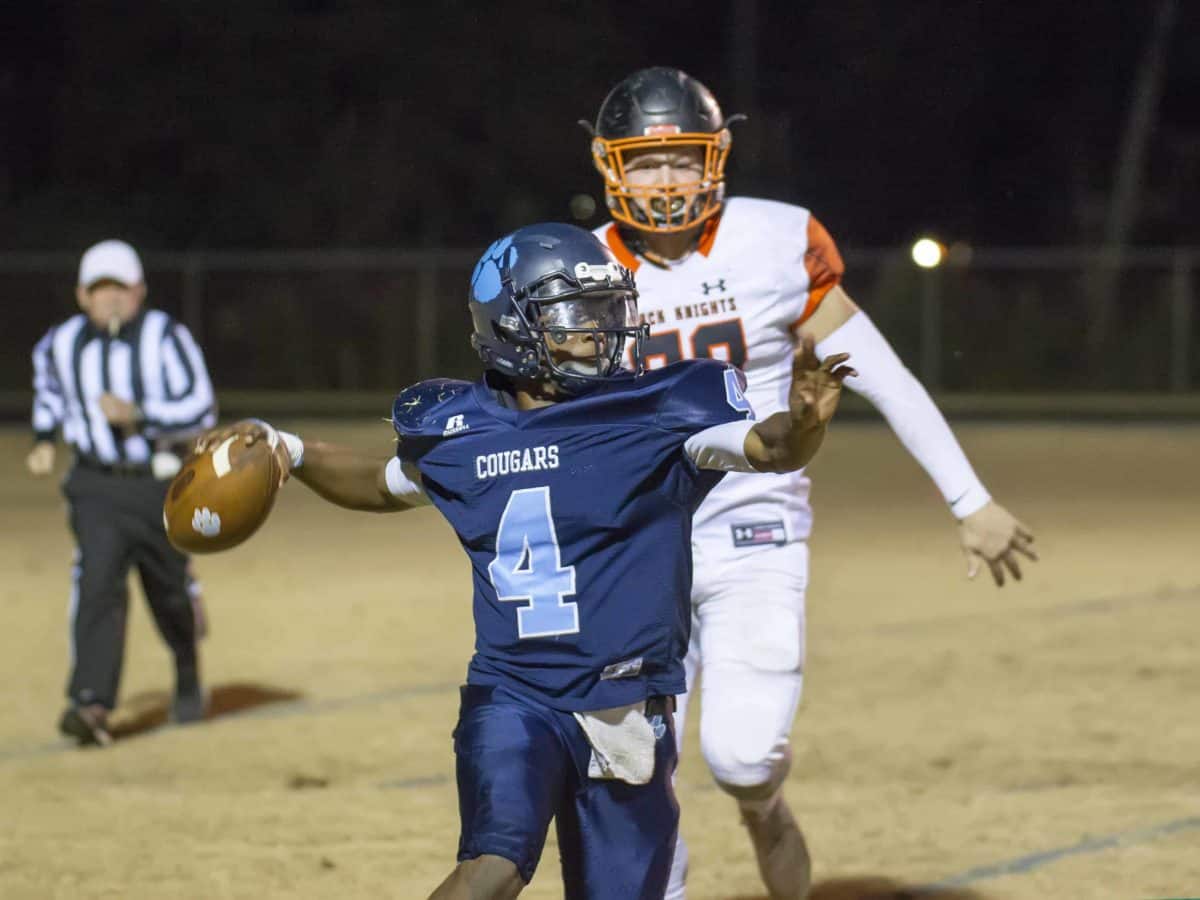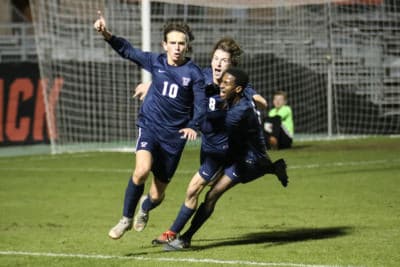

The NCHSAA Board of Directors meeting came and went last week with few major updates.
But the few changes that were made were good.
Raising pay: Football and basketball officials will make a little more money per game (up to $90 per football official and $100 in basketball). This is a concerted effort to attract and keep good officials who may find the price not worth the abuse they receive from fans and coaches. There’s a growing scarcity of people who are willing to be officials. While ultimately the tide will turn when administrators across the state set and enforce rules on fan behavior, this is a good start.
Safety first: Baseball and softball coaches must wear helmets while on the field in their coaching boxes. Some counties were already enforcing this.
Girls wrestling spotlight: It won’t be a state championship, but it might be a testing ground for one. The NCHSAA will have a one-year trial for a girls wrestling invitational hosted by the Winston-Salem Fairgrounds Annex on Feb. 2. The NCHSAA reported last year that it had more than 300 female wrestlers at its member schools. However, those wrestlers must compete against the boys for state championships, and only one has ever qualified for the state tournament. I don’t know whether or not it will eventually have its own state championship division because, technically, you’d have to have girls wrestling teams. But this could serve as an unofficial state title.
Then, there was one NCHSAA change that made no sense.
Some matches won’t count: In volleyball, teams will be allowed to play in two tournaments that won’t count towards win-loss records or MaxPreps rankings that are used in seeding. Once the regular season begins, every match should go on your record in every way. I never liked the idea of “dropping” games for seeding, and I certainly don’t like this because here’s the likely outcome: some teams just won’t report those matches on MaxPreps, which means their official win-loss records will be impossible to track online and keep in the record books. It also eliminates the MaxPreps ranking bump that many teams were seeking out when they sign up to play in one of the state’s few big invitational tournaments. The only plus I see is that more teams will be able to play in or start new tournaments, which can bring in decent revenue.
The decline of girls basketball
While most stories following the National Federation of High Schools’ participation numbers focused on the declining number of football participants, there’s perhaps a bigger shift happening.
Girls basketball has declined by 4.17 percent nationally from the year before, which makes it the third time in the last four years where participation has declined.
In the Triangle, some 4A teams — even large ones like Garner (more than 2,200 students last year) and strong programs — have not had enough interest at their school to field junior varsity teams. When Riverside (located in Durham) had two injuries on its perennially strong varsity team, it had to cancel its JV year and move everyone up either as a player or a team manager.
Girls basketball is now behind volleyball (which is up 6.3 percent over the last five years) in participation, and there’s a correlation there.
Ask any girls basketball coach, and I asked a ton last year, about what the biggest change is to their sport, and they’ll say it’s that would-be basketball players are opting to spend their winters playing club volleyball instead of high school basketball.
Once, an athletics director told me that he never knew whether or not he would have a JV softball or a JV girls lacrosse team in the spring, but he always knew it would be an either/or. “They’re the same girls,” he said. “It just depends on what they want to play.” His greater point, which applies here, is that any shift in participation on the girls side will have an inverse effect on another sport. That’s what has happened here.
Years ago, I did a story on a few star volleyball players who came from basketball families or had given up the sport by their junior or senior years. They pointed out that they liked the team aspect in volleyball (where teams celebrate after every point they score) and felt like the rules on contact in basketball — especially as bigger, taller players — were officiated unfairly against them.
From 2011-12 to 2016-17, there were 16 girls sports that saw increases in participation. Girls basketball was one of five to decrease — and did so by a whopping 6.3 percent — and was the most popular one of those five with more than 400,000 participants (none of the other sports that declined had more than 61,000).
#AskJMB
Question: What minor changes to the NCHSAA would you like to see?
Answer: I like this question because, while the big-picture questions are important (like asking for a new playoff system or a new sport), sometimes we can miss some straightforward, quick-and-easy fixes right under our noses.
Here are the few things I’d like to see happen:
- Make a rule that a playoff game cannot end early due to a lightning delay provided the game is within a certain scoring margin in each sport (example: four runs in baseball or softball, one goal in soccer, 10 points in football, etc.). Too many teams have had their seasons end due to a springtime storm.
- In track and field, make a rule that — for the state meet only — a co-championship will be awarded if the difference between first and second comes in adaptive or wheelchair events (Texas has this rule already).
- Expand dual-team wrestling and dual-team tennis playoffs to 48 in 4A and 3A wrestling and 4A, 3A and 2A tennis. Almost 99 percent of those classifications field teams, but they only get 32 into the playoffs. I think it hurts the growth of their sports when a smaller percentage of teams gets a shot at the playoffs.
- Eliminate mandatory PKs in conference soccer games. Let conferences decide.
- In cross country, allow a team that qualifies at least five individuals to compete in the state championship as a team (the rule currently against this is not equitable, because girls golf teams who qualify three individuals are allowed to compete as a team).
- Also in cross country, group the teams into East and West regions instead of East, Mideast, Midwest, and West. This gives the sport a true “playoff” feel. As it stands, every single cross country team advances to one of those four smaller regionals and — here is the real problem — if a team doesn’t show up there is no penalty, but the regional likely gets one fewer state-qualifying berth. Why? Because berths are awarded based on the number of competing teams, not invited. So the no-show team, as it stands, affects other teams negatively but faces no consequence directly.
- Clarify that only first place needs to play a tiebreaker hole in boys or girls golf state championships. (I once saw them break a tie for third. If there isn’t money on the line, I don’t get the point.) Also, give medals to the top 10 (including ties), not top four.


